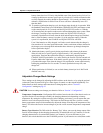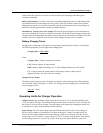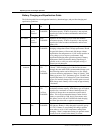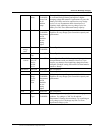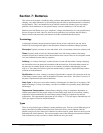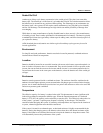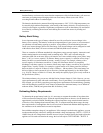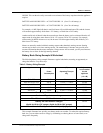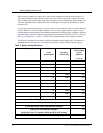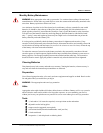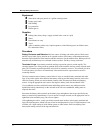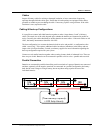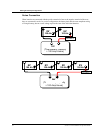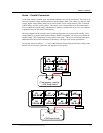
Battery Bank Sizing
70 Prosine 2.5/3.0 Installation & Operation Guide
Insulated battery enclosures also ensure that the temperatures of the individual battery cells are more
consistent, preventing unequal charging which can cause battery failure (some cells will be
overcharged while others are undercharged).
The batteries should also be protected from high temperatures >20°C (70°F). High temperatures can
be caused by high ambient temperatures, solar heating of the battery enclosure, or heat released by a
closely located engine or generator. High battery temperatures result in short battery life and should
be avoided by ventilating the enclosure and reducing the external heat sources by shading and
insulation.
Battery Bank Sizing
Just as important as the type of battery selected for use with your Prosine inverter/charger is the
battery size or capacity. The batteries are the most important part of your system, so we recommend
you purchase as much battery capacity as possible. A large battery will extend running time and
ensure your inverter/charger delivers full rated surge. Your inverter/charger can be configured to work
with batteries from 50Ah (120 reserve minutes) to 2000Ah (4800 reserve minutes).
There are a number of different standards for rating battery energy storage capacity. Automotive and
marine starting batteries are normally rated in cranking amps. This is not a relevant rating for
continuous loads like an inverter. Deep cycle batteries use a more suitable rating system, either “amp-
hours” (“Ah”) or “reserve capacity” in minutes. Battery reserve capacity is a measure of how long a
battery can deliver a certain amount of current—usually 25 amps. For example, a battery with a
reserve capacity of 180 minutes can deliver 25 amps for 180 minutes before it is completely
discharged. Amp-hour capacity is a measure of how many amps a battery can deliver for a specified
length of time—usually 20 hours. For example, a typical marine or RV battery rated for 100 amp-
hours can deliver 5 amps for 20 hours (5 amps x 20 hours = 100 amp-hours). This same battery can
deliver a higher or lower current for less or more time, limited approximately by the 100Ah figure
(e.g., 50A for 2 hours, or 200A for 1/2 hour), but usually the capacity figure given is only accurate at
the specified rate (20 hrs.)
The minimum battery size you can use with the Prosine inverter/charger is 50Ah. However, you can
expect performance to suffer with such a small battery. Even if your battery is in excellent shape and is
fully charged, you will likely experience poor surge power performance and unsatisfactory operating
time with anything but a small AC load. Xantrex
recommends a minimum battery size of 200Ah for
moderate loads (<1000W) and greater than 400 Ah for heavy loads.
Estimating Battery Requirements
To determine the proper battery bank size, it is necessary to compute the number of amp-hours that
will be used between charging cycles. When the required amp-hours are known, size the batteries at
approximately twice this amount. Doubling the expected amp-hour usage ensures that the batteries
will not be overly discharged and extends battery life. To compute total amp-hours usage, the amp-
hour requirements of each appliance that is to be used can be determined and then added together, or
the watt-hours can be totaled and converted to amp-hours.
Start with the nameplate ratings of your appliances. If the wattage is marked on the appliance, you can
use that number directly; otherwise, multiply the marked voltage and amperage: WATTS = VOLTS X
AMPS. Once the AC wattage drawn from the inverter is known, multiply that by the length of time the
appliance will be used to determine the energy the load will require: WATT-HOURS = WATTS X



